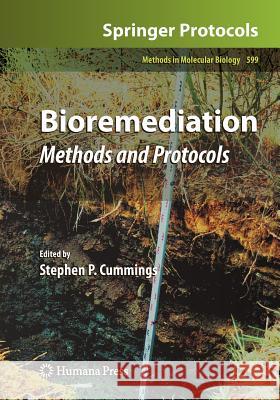Bioremediation: Methods and Protocols » książka
Bioremediation: Methods and Protocols
ISBN-13: 9781617796609 / Angielski / Miękka / 2012 / 285 str.
Bioremediation: Methods and Protocols
ISBN-13: 9781617796609 / Angielski / Miękka / 2012 / 285 str.
(netto: 429,94 VAT: 5%)
Najniższa cena z 30 dni: 432,37
ok. 22 dni roboczych
Dostawa w 2026 r.
Darmowa dostawa!
Since its first systematic application during the 1970s, bioremediation, or the exploitation of a biological system's degradative potential to combat toxic pollutants such as heavy metals, polyaromatic hydrocarbons (PAH), cyanides, and radioactive material, has proven itself over time, and the many advances in molecular techniques have only amplified its utility. In Bioremediation: Methods and Protocols, experts in the field explore imaginative and ambitious multidisciplinary techniques that will enable more predictable removal of pollutants from a variety of environments. The easy-to-follow volume addresses some of the broader issues such as the effect of the environment in determining the availability and fate of organic and inorganic compounds and how choices around the most appropriate bioremediation process can be arrived at, as well as detailed complementary techniques that support the effective deployment and monitoring of a bioremediation approach. Written in the highly successful Methods in Molecular Biology(TM) series format, chapters include introductions to their respective topics, lists of the necessary materials and reagents, step-by-step, readily reproducible protocols, and notes on troubleshooting and avoiding known pitfalls. Authoritative and cutting-edge, Bioremediation: Methods and Protocols offers researchers a series of invaluable techniques certain to enhance their work with environmental contamination.
Since its first systematic application during the 1970s, bioremediation, or the exploitation of a biological system s degradative potential to combat toxic pollutants such as heavy metals, polyaromatic hydrocarbons (PAH), cyanides, and radioactive material, has proven itself over time, and the many advances in molecular techniques have only amplified its utility. In Bioremediation: Methods and Protocols, experts in the field explore imaginative and ambitious multidisciplinary techniques that will enable more predictable removal of pollutants from a variety of environments. The easy-to-follow volume addresses some of the broader issues such as the effect of the environment in determining the availability and fate of organic and inorganic compounds and how choices around the most appropriate bioremediation process can be arrived at, as well as detailed complementary techniques that support the effective deployment and monitoring of a bioremediation approach. Written in the highly successful Methods in Molecular Biology series format, chapters include introductions to their respective topics, lists of the necessary materials and reagents, step-by-step, readily reproducible protocols, and notes on troubleshooting and avoiding known pitfalls.§Authoritative and cutting-edge, Bioremediation: Methods and Protocols offers researchers a series of invaluable techniques certain to enhance their work with environmental contamination.











